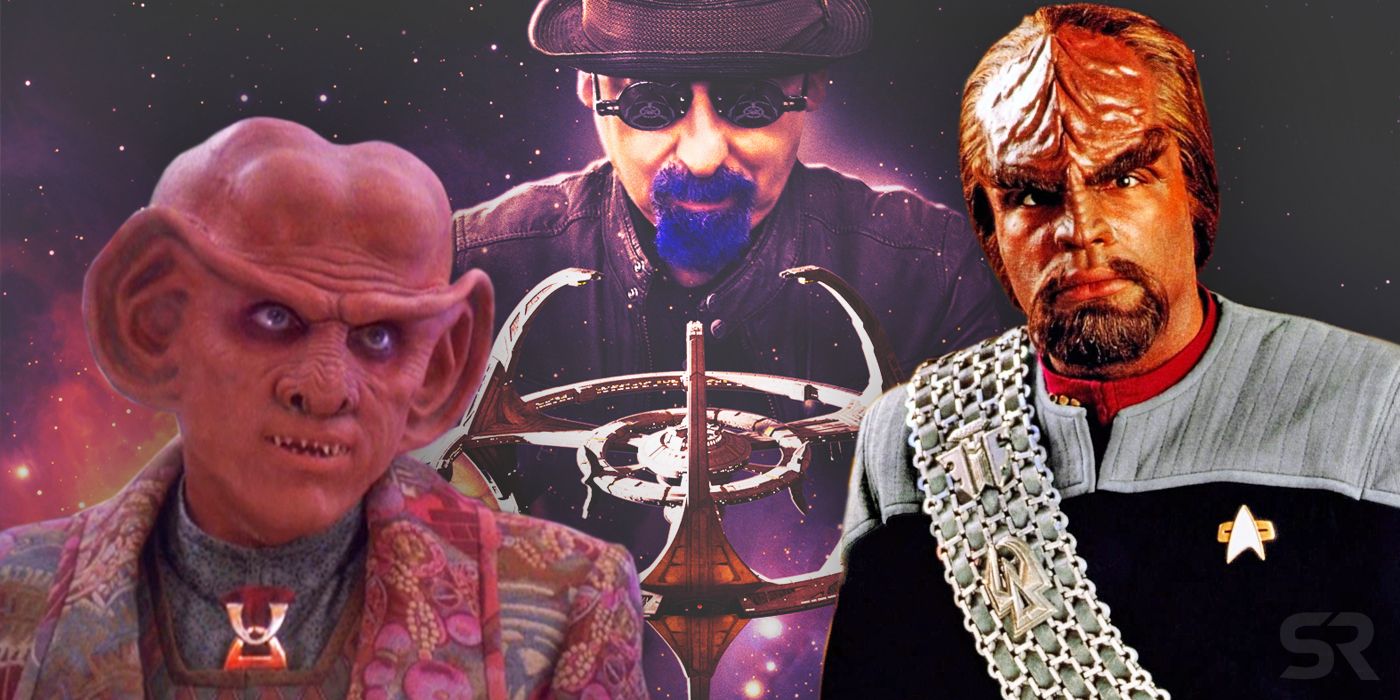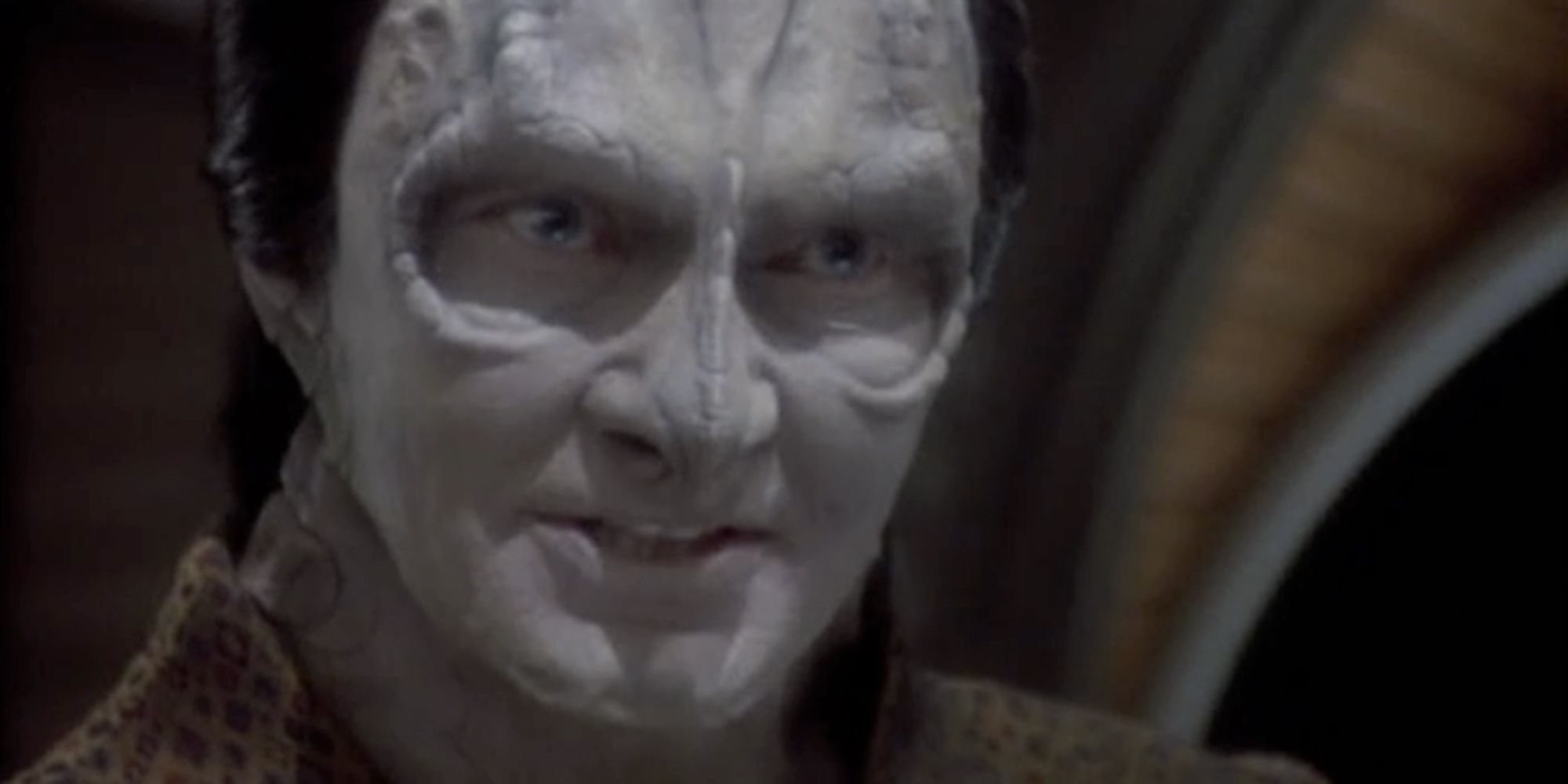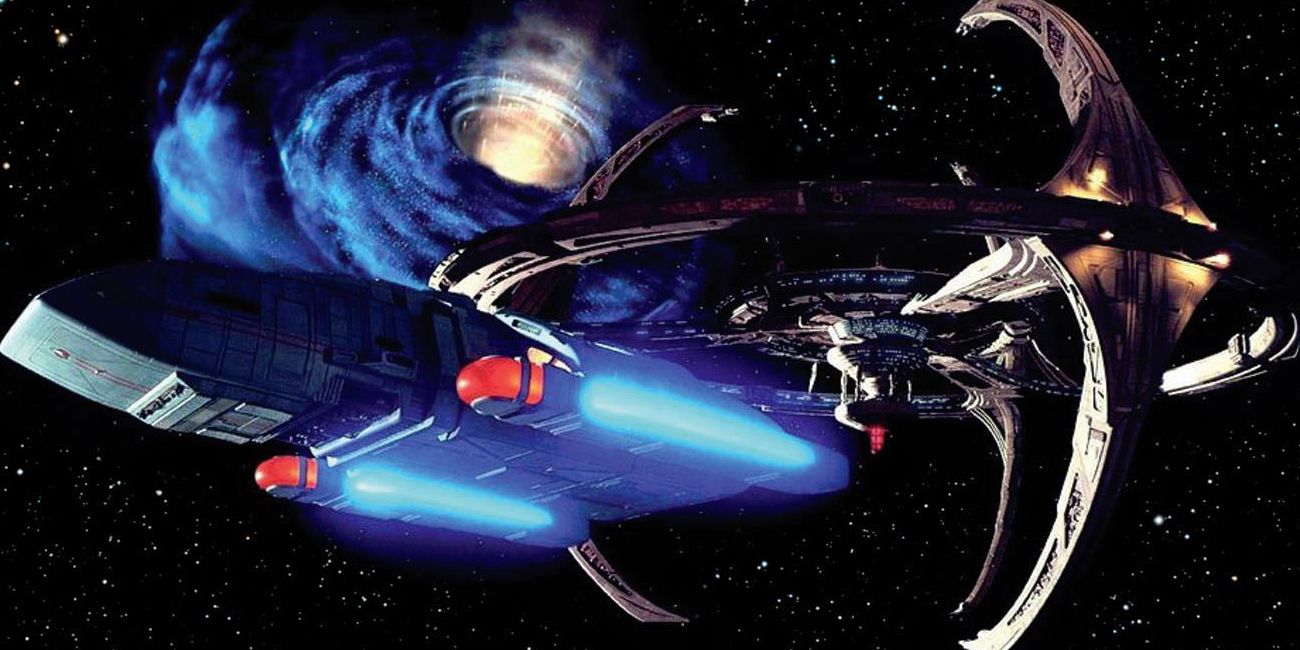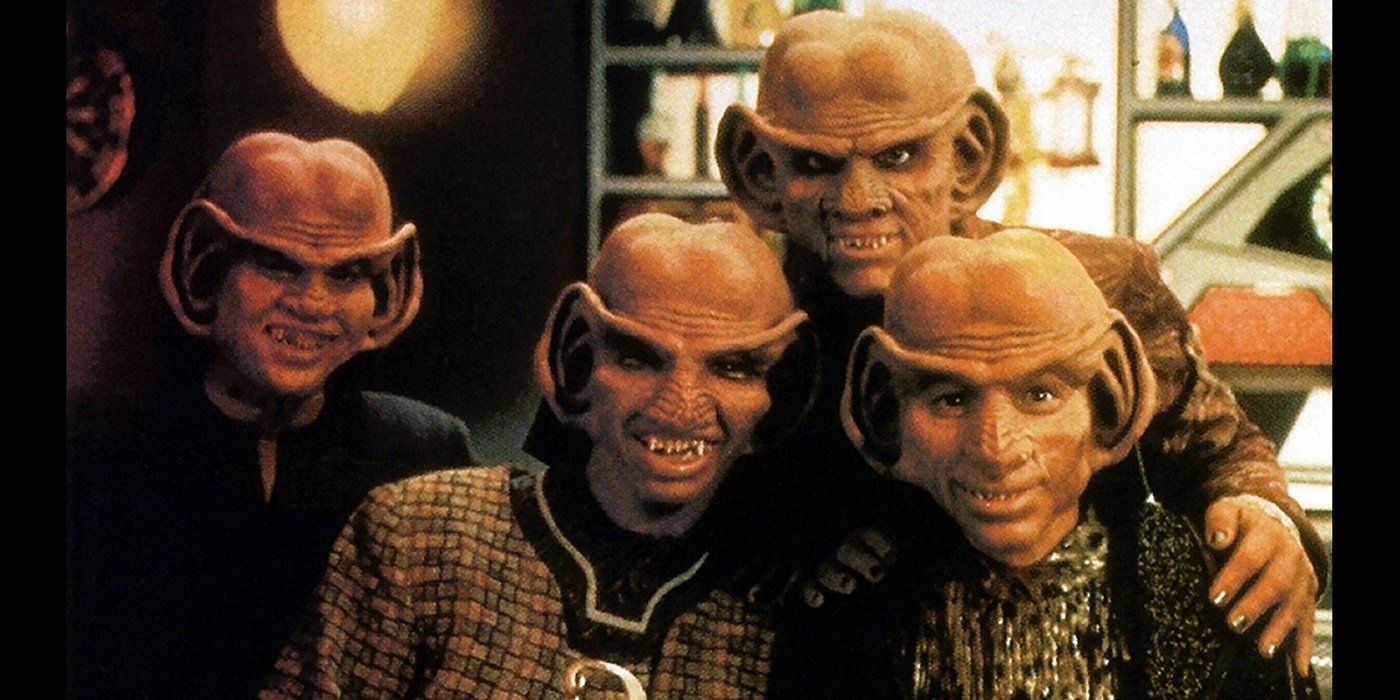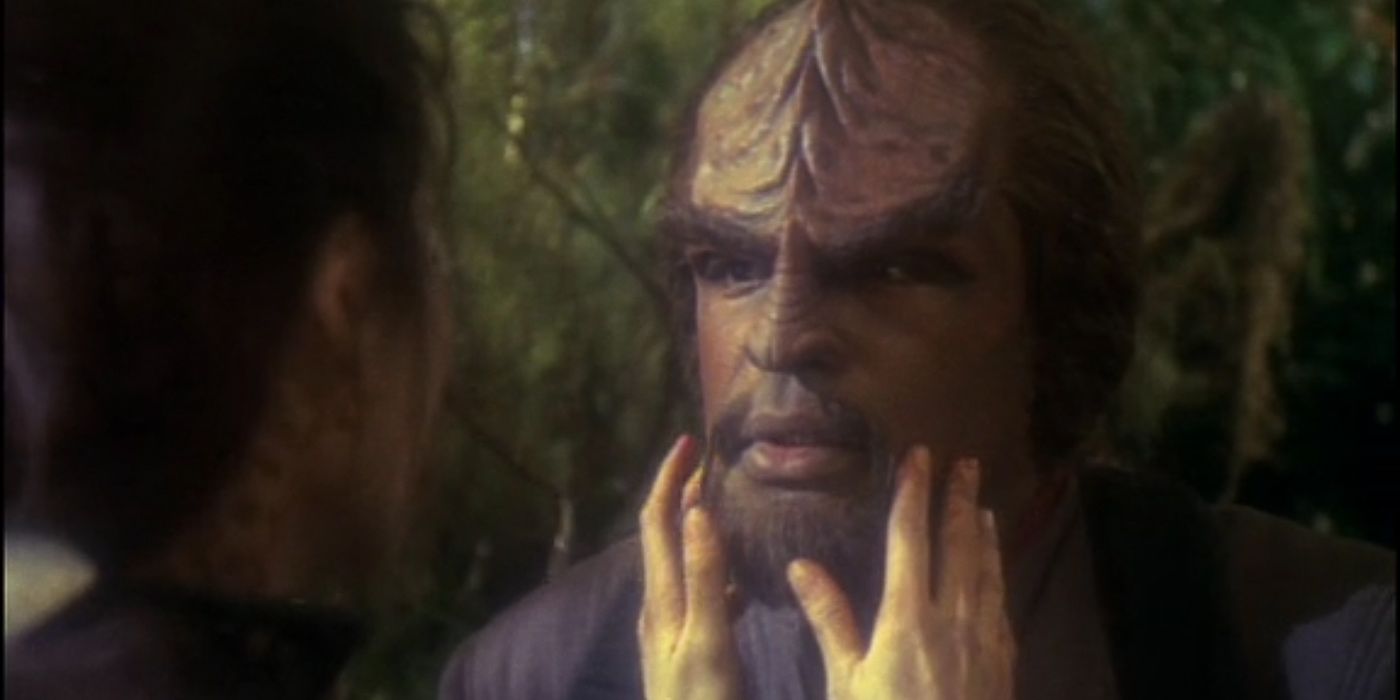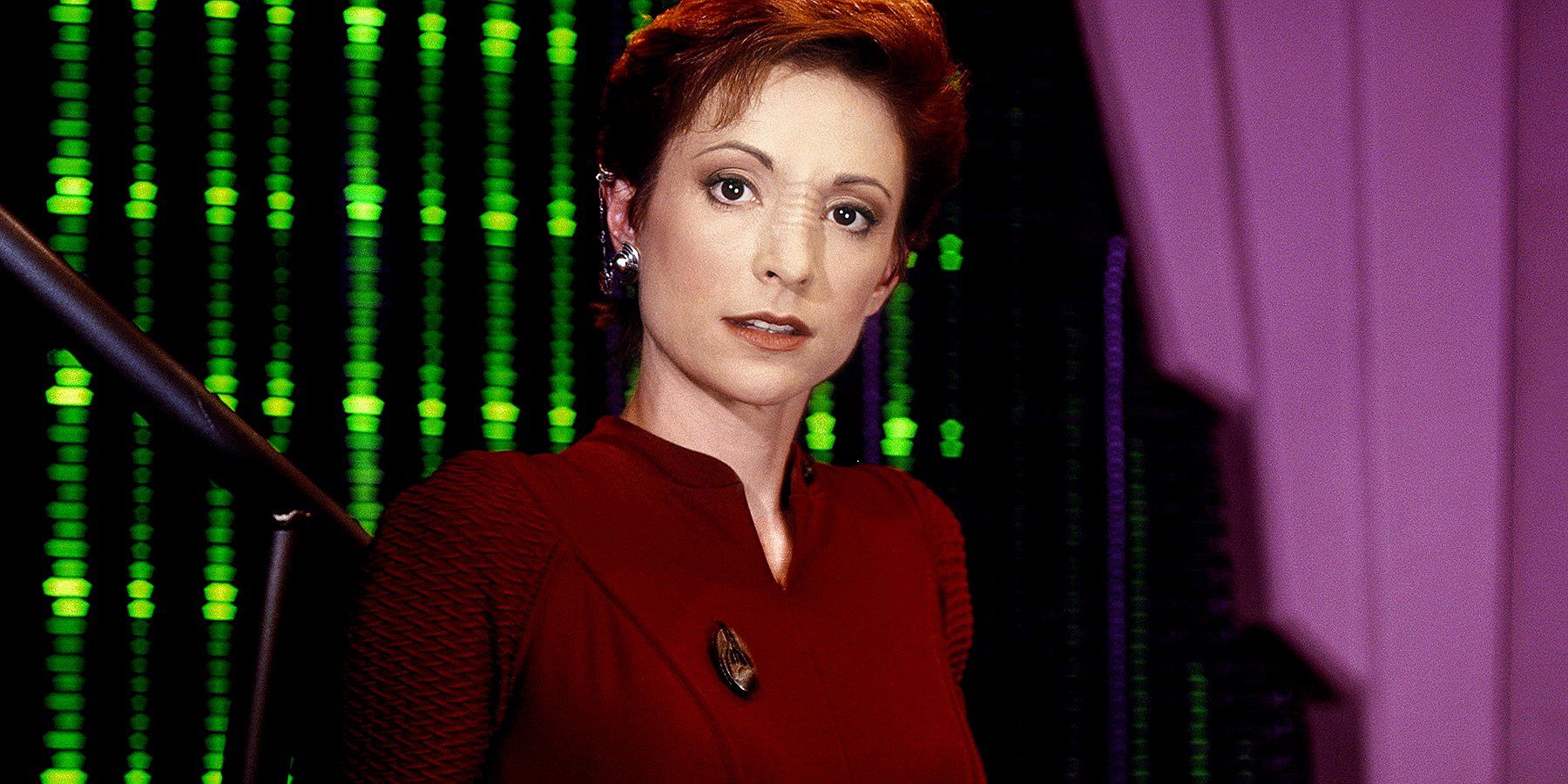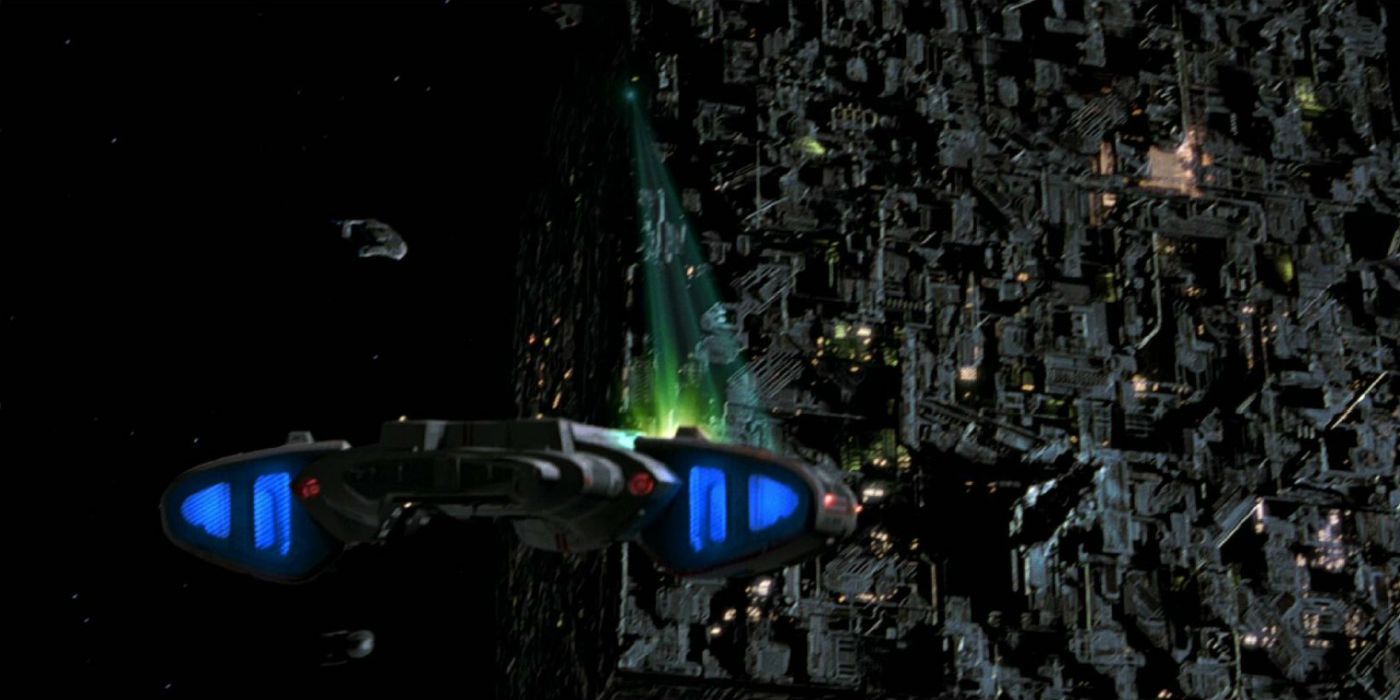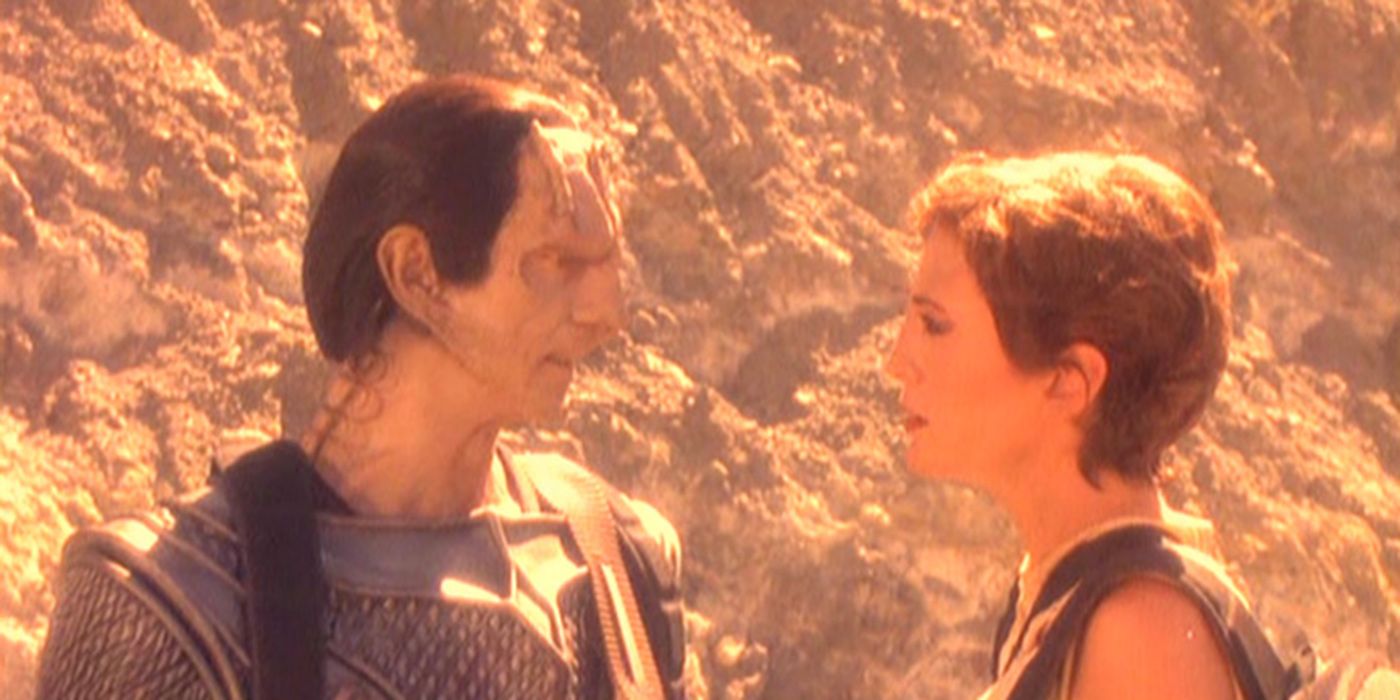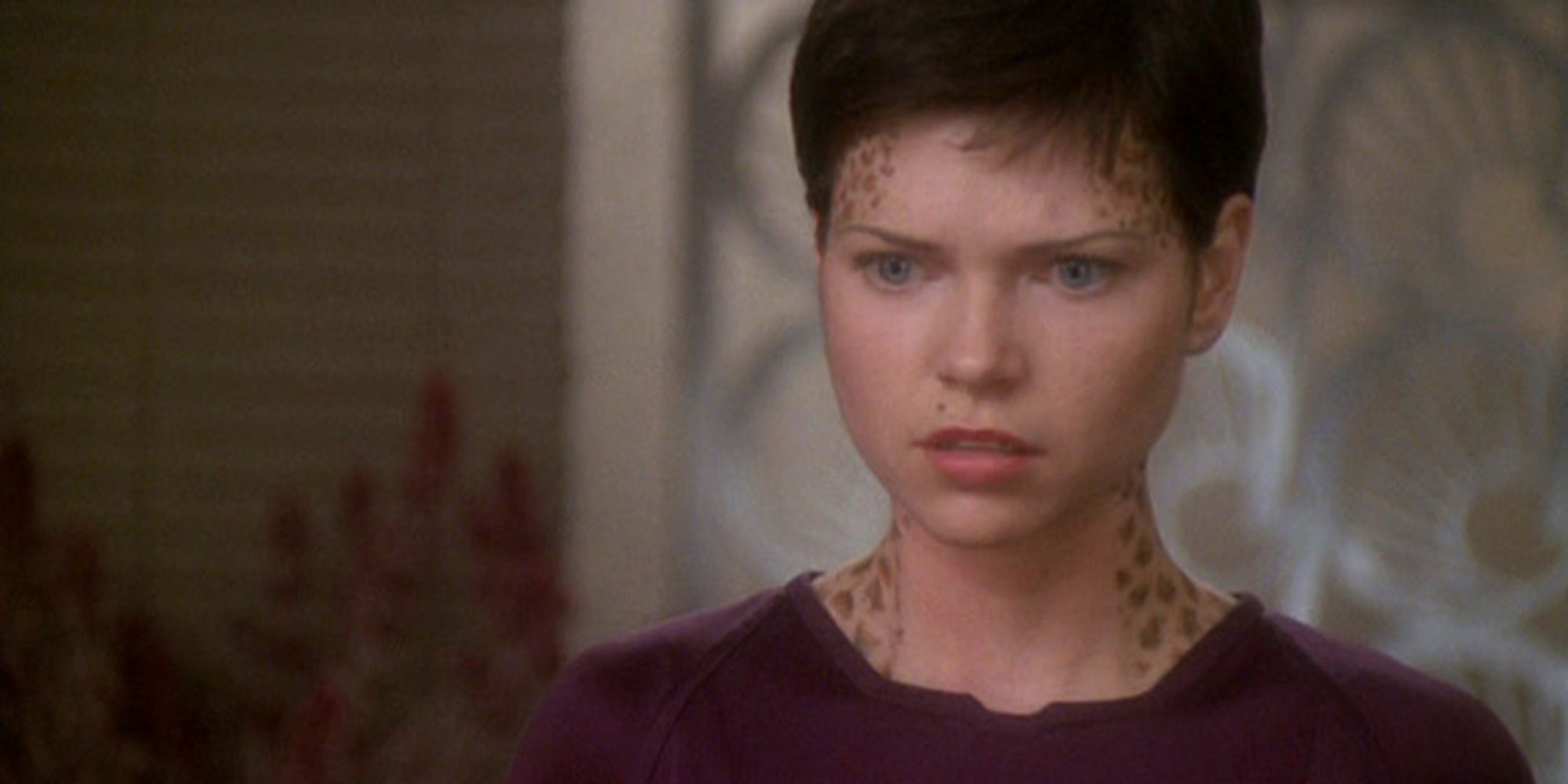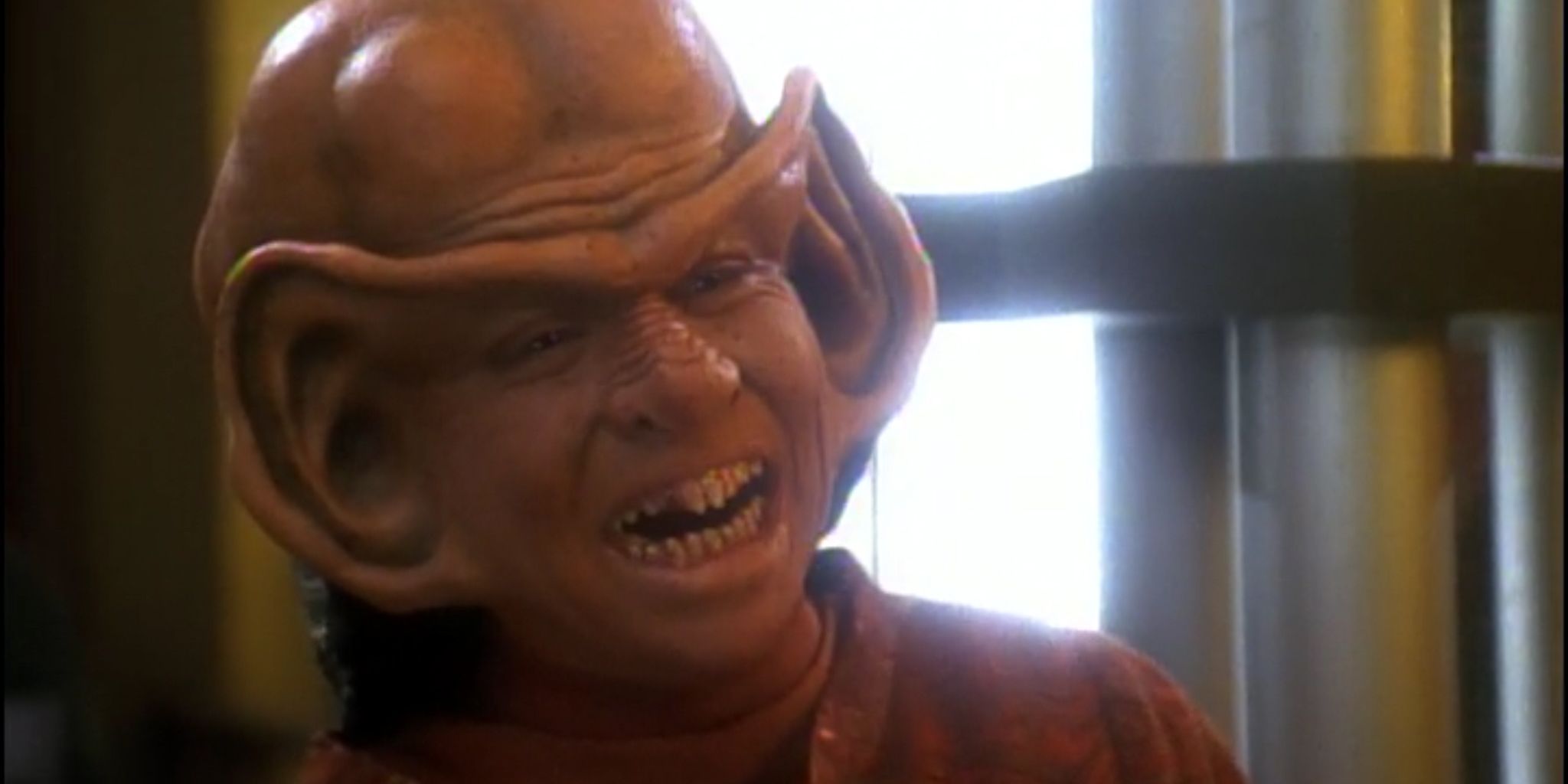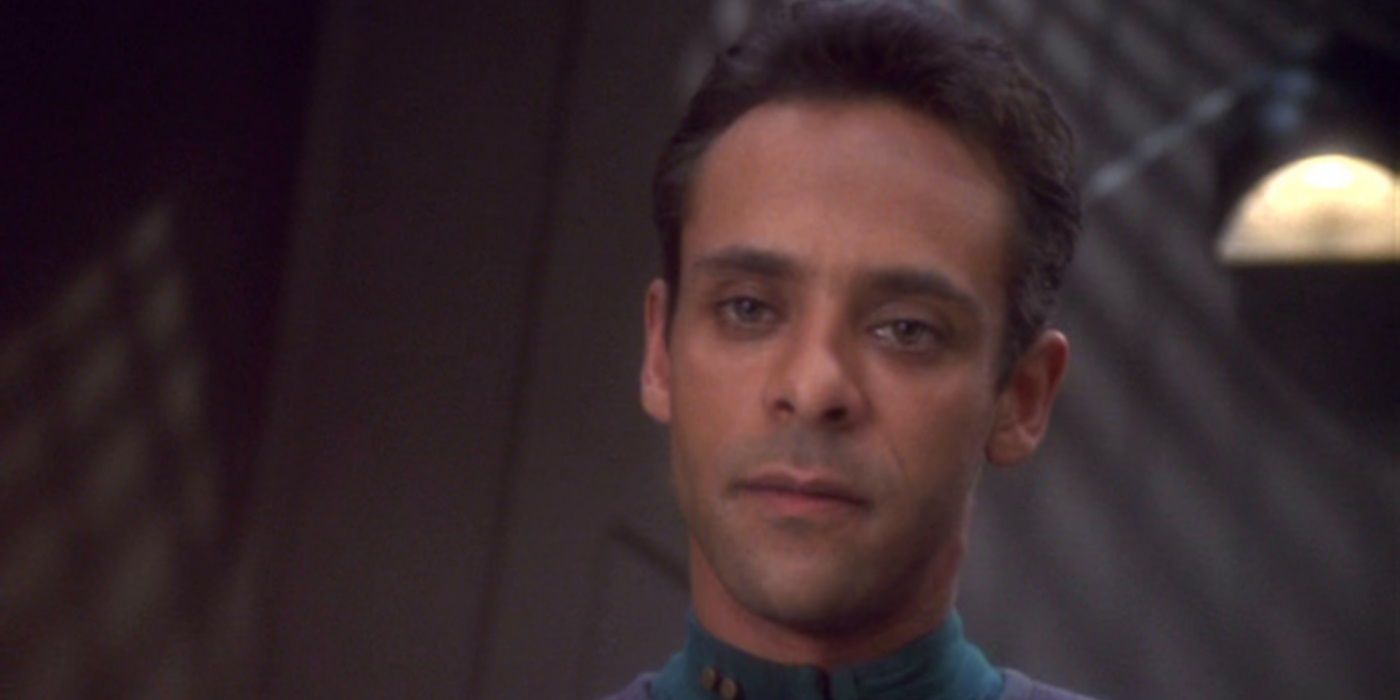The Star Trek: Deep Space Nine documentary, What We Left Behind, screened in theaters for a one-night engagement Monday, May 13th, and it wasn't short on revelations about one of Star Trek's most divisive series.
Deep Space Nine's penchant for serialized storytelling that tended to favor politics over exploration alienated, for lack of a better word, Star Trek fans who were used to a more traditional Star Trek format - captain, crew, ship, final frontier. But despite the initial reception, Deep Space Nine managed to run for seven seasons and produced some of the most trenchant, memorable and brilliant stories the franchise had ever seen. And it's serialized nature turned out to be ahead of its time - so much so that the series has enjoyed a renewed popularity in recent years as its found a home on streaming sites and attracted new audiences.
It was that newfound popularity that helped inspire and eventually crowdfund What We Left Behind, a documentary exploring Star Trek: Deep Space Nine's production from the perspective of the cast and crew. Directed by former showrunner, Ira Steven Behr, and featuring interviews from every member of the original cast (archival footage was used for Avery Brooks, but his presence is felt) and segments featuring four former writers breaking out the season premiere of a hypothetical season 8, What We Left Behind is not only a love letter to Deep Space Nine, it's a delicious peek behind the curtain at one of Star Trek's most unexpected journeys.
Garak Was Definitely Gay In Deep Space Nine
Garashir fans, rejoice. According to What We Left Behind, Garak, the spy-turned-tailor who lived out his "retirement" on Deep Space Nine was definitely and unequivocally gay. Ira Steven Behr used the phrase "completely gay" if there was any doubt, and Andrew Robinson concurred during one of his own interviews (he also discussed flirting with Bashir in a soundbite that was played over a clip of him massaging Bashir's shoulders almost sensually).
Behr marked Garak's homosexuality as something he would've been clearer about had he been given the latitude, and the same went for exploring homosexuality as a whole. In a segment discussing some of the controversial topics Deep Space Nine explored in depth, Behr points out that the show dove into war, its aftermath and religion, but he admitted to not fighting hard enough on homosexuality. He refused to give the show credit for the kiss shared between Terry Farrell and Susannah Thompson in "Joined," because it only scratched the surface and he believed they could've tried harder to explore the topic than they did.
Paramount Pushed Back Against Deep Space Nine's Serialization - Hard
What We Left Behind touched heavily on how groundbreaking Deep Space Nine's foray into serialized storytelling was not only compared to other Star Trek series, but television as a whole. The doc spotlights season 2's opening three-episode arc surrounding Bajoran politics that that was Star Trek's first such and kicked off Deep Space Nine's foray into the serialized style that would become a huge part of its legacy. Unfortunately, despite how well-received the show is by today's standards, it was fighting an uphill battle with fans while it was on the air. And because it was a syndicated show and thus not aired consistently in many markets, introducing serialized storytelling eliminated viewers who were unable to watch every single week, even if they wanted to.
From the studio's perspective, Deep Space Nine was throwing viewers away on purpose, and considering the show was already struggling in the ratings, Paramount obviously wasn't behind the idea of making it more difficult for viewers to jump in, a barrier episode television wouldn't have presented. Thank goodness the writers were allowed the latitude to turn a deaf ear.
Armin Shimmerman Hosted Ferengi Rehearsals on Weekends
The Ferengi subplots on Deep Space Nine were the most complex and extensive treatment the alien race got in the Star Trek franchise. They involved a cast of recurring characters, many of whom grew popular in their own right. Armin Shimmerman served as de facto head of the brood and was known to gather those involved in Ferengi storylines for any given episode at his home on weekends to rehearse. The vibrant histories and relationships that characterized Deep Space Nine's Ferengi episodes are no doubt a product of that extra love and care.
No One Was Very Excited To Have Worf In Deep Space Nine
Despite the fact that Worf, Son of Mogh, remains one of Star Trek's most popular characters, and that many fans consider him a brilliant addition to Deep Space Nine, the cast wasn't that thrilled to hear he'd be joining their ranks. After The Next Generation ended, Michael Dorn was offered the opportunity to continue the role on Deep Space Nine and as we all know, he took it. But the already large ensemble had their objections.
Related: Every Star Trek Series Ranked Worst To Best
By and large, the biggest frustration came at the idea that Deep Space Nine needed a shot in the arm of The Next Generation magic to "save" it. The publicity surrounding Dorn's arrival painted the situation that way, at least. For her part, Nana Visitor worried Worf's addition would eclipse Kira's role as Siskos' first officer and that she would be relegated to "getting coffee." For what it's worth, Colm Meaney was just happy to see another friend from The Next Generation and was apparently unaware of any friction whatsoever. Luckily, whatever tension there was didn't last and before long it became hard to imagine Deep Space Nine without Star Trek's favorite Klingon.
Kira Was Supposed to Have an Affair with Dukat
Kira Nerys' relationship with the morally grey-to-bankrupt Gul Dukat made for one of Deep Space Nine's most compelling subplots. The two began with seemingly irreconcilable differences but over the course of several seasons bonded over their shared trauma and Dukat's half-Bajoran half-Cardassian daughter Tora Ziyal. Kira's feelings toward Dukat never grew to anything more than begrudging respect and/or tolerance, despite the latter's obvious lascivious intent toward her. But that didn't stop the writers from very nearly turning the one-sided sexual energy that permeated their scenes together into a full-blown affair.
In one interview between Nana Visitor and Ira Steven Behr, Visitor animatedly remembers Behr suggesting the idea and her intense objection to it. She was so against the idea, the writers eventually abandoned it... in favor of Dukat having a relationship with her mother, Kira Meru, instead. The episode "Wrongs Darker Than Death or Night" explores what's essentially Kira's worst nightmare, and while the story in and of itself remains unpalatable, the alternative - undermining Kira's character for a sexual relationship with a man she could barely stand - would've been worse.
The Addition of the Defiant Was Pretty Controversial
Deep Space Nine defined itself by its stationary position within the Star Trek franchise - literally. But What We Left Behind revealed that as the Dominion arc developed and they became a more formidable enemy, the producers realized runabouts made for a laughable defense against the Jem Hadar and other enemies coming through the wormhole. So, the idea to give the station a warship came about and the Defiant was born.
Rick Berman initially objected to the idea of introducing a ship into the show's dynamic because he felt Deep Space Nine would've lost the one thing that distinguished it from The Next Generation and Voyager. Luckily, Behr won out and the introduction of the U.S.S. Defiant increased the show's ability to dig into combat stories, explore the Gamma Quadrant and become the first Starfleet vessel to operate with a cloak.
Nana Visitor Looked At Kira As A Complete PTSD Arc
Before Aron Eisenberg got the chance to explore post-traumatic stress disorder in Deep Space Nine season 7, Kira Nerys served as a subtler example of the condition throughout her tenure on the show. According to Nana Visitor, the show pick up with Kira in season 1 after she's just finished a long stint as a Bajoran freedom fighter. She's clearly haunted by what she saw and did during the Bajoran fight for freedom, but she eventually evolves into someone who resolves her inner turmoil and can let herself be loved, as manifested in her relationship with Odo. Visitor pointed out this trajectory during a segment of What We Left Behind that focuses on how the show dealt with the fallout of combat. Even for those who've watched the series end to end, this information felt like a revelation and offers fans a new perspective on the character, two decades after the show's conclusion.
The Deep Space Nine Writers Don't Remember... Everything
One of the documentary's most enjoyable repeat segments features former Deep Space Nine writers René Echeverria, Ron Moore, Hans Beimler and Robert Hewitt Wolfe forming a one-day writers' room in which they break an imagined season 8 premiere. One of the funniest elements of those interludes is when it becomes apparent the people who conceived nearly everything in the show don't remember some key details. They argue over the spelling of Qo'nos, the Klingon homeworld, and when discussing Ezri, argue over how she came to possess the Dax symbiont after Jadzia's death. Was she on Deep Space Nine when Jadzia died and was the only Trill within range? The bit serves as yet another reminder that Star Trek fans are occasionally better keepers of lore than the creators...
Nog Dies in Deep Space Nine Season 8...
One of the most compelling parts of the documentary is watching the premiere of the hypothetical Star Trek: Deep Space season 8 mapped out. And by the sound of it, it would have been incredible - unless you're a Nog fan. The teaser features Nog as captain of a ship attempting to outrun a cloaked ship that's attacking him. He just barely makes it through the wormhole and catches sight of Deep Space Nine before we cut to the station to see his ship burst into smithereens. Roll credits. His death sets off a mystery that promises to propel the entire season forward, especially when we find out who was attacking him.
Season 8 Dr. Bashir is the Head of Section 31
In the hypothetical Deep Space Nine season 8 premiere, two decades have passed since the events of "What You Leave Behind, and the landscape of the station and the lives of her former inhabitants are much changed. Kira's a Vedek, the station is a shrine, Miles is back on Earth teaching at Starfleet Academy, and Ezri and Julian are happily married and serving on a starship together. But what we find out in Act V of the finale, is that Section 31 is actively working to destabilize a Bajor that's growing as a military power. Who's in charge of that operation? Dr. Julian Bashir. Whether or not his wife knows about his secret identity is something Behr and Co. didn't get to, but our headcanon says no.

